
Halo: Combat Evolved is a 2001 first-person shooter video game developed by Bungie and published by Microsoft Game Studios for the Xbox. It was released as a launch game for Microsoft's Xbox video game console on November 15, 2001. The game was ported to Microsoft Windows and Mac OS X in 2003. It was later released as a downloadable Xbox Original for the Xbox 360. Halo is set in the twenty-sixth century, with the player assuming the role of the Master Chief, a cybernetically enhanced supersoldier. The Chief is accompanied by Cortana, an artificial intelligence. Players battle aliens as they attempt to uncover the secrets of the eponymous Halo, a ring-shaped artificial world.

Naoto Ohshima is a Japanese artist and video game designer, best known for designing Sonic the Hedgehog and Dr. Eggman characters from Sega's Sonic the Hedgehog franchise. Although Yuji Naka created the original tech demo around which Sonic's gameplay was based, the character in his prototype was a ball that lacked any specific features. Sonic Team considered numerous potential animal mascots before deciding on Ohshima's design, with an armadillo or hedgehog being the top choices because their spikes worked well with the concept of rolling into enemies.
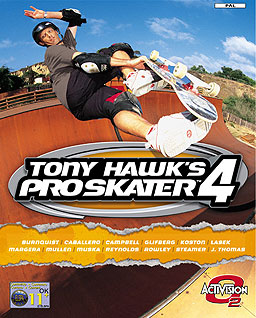
Tony Hawk's Pro Skater 4 is a 2002 skateboarding game developed by Neversoft and published by Activision under their Activision O2 label. The game was ported by different developers to various systems. It is the fourth installment in the Tony Hawk's series. The game was released in 2002 for the GameCube, PlayStation, PlayStation 2, Xbox, and Game Boy Advance. In 2003, it was published for Microsoft Windows and Mac OS X. In 2004, a Tapwave Zodiac version was released.

TimeSplitters 2 is a first-person shooter video game developed by Free Radical Design and published by Eidos Interactive for PlayStation 2, Xbox and GameCube game consoles. It is the second game in the TimeSplitters series, and a sequel to the original TimeSplitters.

Call of Duty: Finest Hour is a first-person shooter video game developed by Spark Unlimited and published by Activision for GameCube, PlayStation 2, and Xbox. It is the first console installment of Call of Duty.
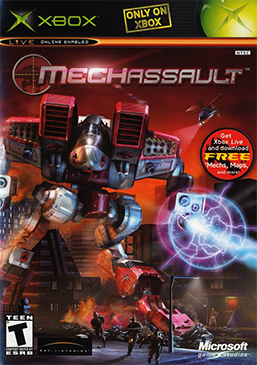
MechAssault is a video game released for the Xbox notable for being one of the first games to support Xbox Live online multiplayer. Developed by Day 1 Studios and published by Microsoft, MechAssault was initiated when Denny Thorley of Day 1 Studios approached Jon Kimmich of Microsoft about developing an original BattleTech game built from the ground up to support console play. "MechAssault" was released in November 2002. A sequel, MechAssault 2: Lone Wolf, was released on December 28, 2004. Both games are set in the BattleTech fictional universe.
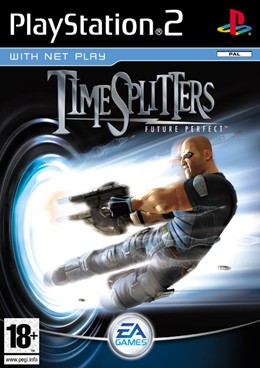
TimeSplitters: Future Perfect is a 2005 first-person shooter video game developed by Free Radical Design and published by Electronic Arts for the GameCube, PlayStation 2 and Xbox video game consoles.

Project: Snowblind is a first-person shooter video game developed by Crystal Dynamics and published by Eidos Interactive for PlayStation 2, Xbox and Microsoft Windows. The game follows soldier Nathan Frost, who is enhanced with nanotechnology following injuries on a mission and sent against a military regime known as the Republic. Players control Frost through a series of linear levels, using enhancements both in combat and to manipulate security devices such as cameras. The online multiplayer allows up to sixteen players to take part in modes ranging from team-based to solo battles.

Gears of War is a 2006 third-person shooter video game developed by Epic Games and published by Microsoft Game Studios. It is the first installment of the Gears of War series, and was initially released as an exclusive title for the Xbox 360 in November 2006. A Microsoft Windows version, developed in conjunction with People Can Fly, was released in November 2007. The game's main story, which can be played in single or co-operative play, focuses on a squad of troops who assist in completing a desperate, last-ditch attempt to end a war against a genocidal subterranean enemy, the Locust, and save the remaining human inhabitants of their planet Sera. The game's multiplayer mode allows up to eight players to control characters from one of the two factions in a variety of online game modes. Gameplay features players using cover and strategic fire in order to win battles.

Sneakers, released in Japan as Nezmix: Have A Mice Day!, is a video game developed by Media.Vision and published by Microsoft Game Studios exclusively for the Xbox in 2002. Sneakers is an action-puzzle game in which the player leads a group of mice to explore a house and its surroundings to detect enemy rats and protect their group in beat 'em up fights. Marketed as making use of 'fur shading' graphics, the design of the mice in Sneakers was intended to showcase the technical capabilities of the Xbox. The game was developed as one of two Japan-exclusive launch titles for the Xbox, and was later released in North America in an exclusive distribution with Toys R Us retail stores. Upon release in Japan, Nezmix sold poorly, with critics attributing the release to contributing to the poor launch of the console in the country. The North American version of Sneakers received generally unfavorable reviews, with criticism directed at the game's linear and repetitive gameplay.

Test Drive Unlimited is a 2006 racing video game developed by Eden Games and published by Atari for Xbox 360 and Microsoft Windows. Atari Melbourne House developed the PlayStation 2 and PlayStation Portable versions. Being the eighteenth entry in the Test Drive series, Unlimited serves as a reboot of the franchise, discarding the continuity of the previous games. The game features over 125 licensed sports cars and motorcycles and the terrain is modeled after the Hawaiian island of Oʻahu that features some 1,000 miles (1,600 km) of roads and highways.
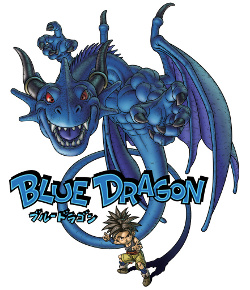
Blue Dragon is an role-playing video game developed by Mistwalker and Artoon and published by Microsoft Game Studios for the Xbox 360. Blue Dragon is based on a design by Final Fantasy series creator Hironobu Sakaguchi, who also supervised development and wrote the plot. It is both Mistwalker's debut title and the first title to be helmed by Sakaguchi outside of Square Enix.

Blinx 2: Masters of Time and Space is a platform video game developed by Artoon and published by Microsoft Game Studios for the Xbox. Released in 2004, it is the sequel to Blinx: The Time Sweeper and was the second and final installment of the series. Like the previous installment, it is playable on an Xbox 360 using backwards compatibility.
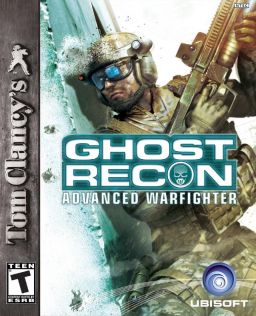
Tom Clancy's Ghost Recon Advanced Warfighter (GRAW) is a tactical shooter video game released for the Xbox 360, Xbox, PlayStation 2 and Microsoft Windows in 2006. As in previous Ghost Recon games, players command their team while neutralizing hostile forces and completing various mission objectives. These objectives can range from escorting friendly units across the map to rescuing hostages or taking out enemy artillery.

Sudeki is a 2004 action role-playing game developed by Climax Studios. It was originally released for Xbox by Microsoft Game Studios. A Microsoft Windows port was released in Europe by Zoo Digital Publishing in 2005, and worldwide via Steam and GOG.com in 2014 by Climax. Set on the splintered world of Sudeki, divided into the twin planets Illumina and Akloria, the storyline follows four characters chosen by the god Tetsu to prevent the return of the dark god Haigou and reform Sudeki. Gameplay follows the four protagonists as they explore various environments, with different characters fighting enemies using third-person melee or first-person shooter combat.
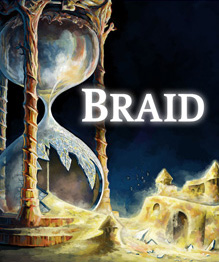
Braid is a puzzle-platform video game developed by Number None and considered an indie title. The game was originally released in August 2008 for the Xbox 360's Xbox Live Arcade service. Ports were developed and released for Microsoft Windows in April 2009, Mac OS X in May 2009, PlayStation 3 in November 2009, and Linux in December 2010. Jonathan Blow designed the game as a personal critique of contemporary trends in video game development. He self-funded the three-year project, working with webcomic artist David Hellman to develop the artwork. An anniversary version is planned for release for PlayStation 4, PlayStation 5, Xbox One, Xbox Series X/S, Nintendo Switch, Windows, Mac, and Linux with updated graphics and developer commentary.

Tom Clancy's H.A.W.X is an arcade flight video game developed by Ubisoft Bucharest and published by Ubisoft for Microsoft Windows, Xbox 360 and PlayStation 3, and by Gameloft for BlackBerry PlayBook, iOS, Palm Pre, Android and Symbian^3. It was released for Xbox 360 and PlayStation 3 in North America on March 3, 2009, for Windows on March 17, for iOS on December 9, for BlackBerry on January 8, 2010, for Palm Pre on April 2, for Android on September 13, and for Symbian on January 16, 2011. A Wii version was announced, but was ultimately canceled. In September 2010, a sequel titled Tom Clancy's H.A.W.X 2 was released for Xbox 360 and PlayStation 3. The Microsoft Windows and Wii versions were released in November 2010. In November 2018, Tom Clancy's H.A.W.X was added to the Xbox One's Backwards Compatibility list although only through physical media as it's not available on the Xbox Marketplace.

Tomb Raider is a 2013 action-adventure game developed by Crystal Dynamics and published by Square Enix's European branch. It is the tenth main entry and a reboot of the Tomb Raider series, acting as the first instalment in the Survivor trilogy that reconstructs the origins of Lara Croft. The game was released for PlayStation 3, Windows, and Xbox 360 on 5 March 2013. Gameplay focuses on survival, with exploration when traversing the island and visiting various optional tombs. It is the first game in the main series to have multiplayer and the first game in the series to be published by Square Enix after the latter's acquisition of Eidos Interactive in 2009.

Kameo: Elements of Power is a 2005 action-adventure video game developed by Rare and published by Microsoft Game Studios. The player controls Kameo, a 16-year-old elf, who must travel across the land, rescuing her family while collecting Elemental Sprites and Warriors in a Beat 'Em Up style combat against the trolls that stand in her way. Kameo's ten elemental powers let her transform into creatures and use their varied abilities to solve combat-oriented puzzles and progress through the game's levels.


















